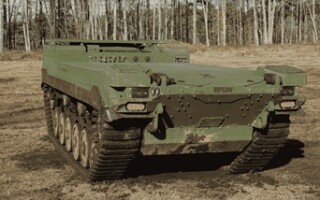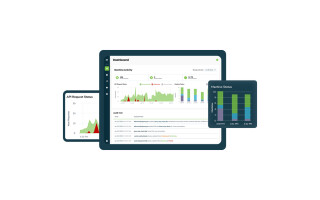Radar, unmanned aircraft, best bets for defense electronics suppliers
StorySeptember 10, 2013
Despite the doom and gloom associated with the U.S. Department of Defense (DoD) budget cuts, market analysts see silver linings for defense electronics suppliers in the radar and unmanned aircraft segments, as well as in avionics retrofits.
“Strictly looking at the budget can be a gloomy experience as DoD leadership is faced with a great deal of uncertainty thanks to sequestration, the upcoming 2014 Quadrennial Defense Review, the draw down in Afghanistan, the debt ceiling debate, congressional elections, etc.,” says Brad Curran, Industry Analyst at Frost & Sullivan (www.frost.com). “All of this makes it very hard for DoD leaders and industry to plan efficiently. We don’t really have a strategy. The DoD 2014 budget request was $41.42 billion, down almost $5 billion from $46.1 billion in the 2013 request. I expect to see the 2015 request be even lower due to the political challenges, and stay flat for a couple years at around $40 billion.”
On the other hand, there have been plenty of contracts let, more spending each month than was budgeted, and more market participants than ever, Curran continues. “In 2011 the top 10 prime contractors had about 60 percent of the prime contracts, but in 2012 they only took 41 percent of the prime contracts let. In 2011 there were 290 companies getting prime contracts, but in 2012 that leapt to 435. Now contracts are more spread out, involving more companies and reducing not only cost but risk as well.”
“Of course, this is also an ideal market for COTS suppliers,” says Michel Merluzeau, Managing Partner of G2 Global Solutions (www.g2globalsolutions.com). “It doesn’t matter if it is only an 80 percent solution – who cares? Why spend 20 percent more for that extra 5 to 10 percent of capability if it might just turn into a “nice to have.” If it has a significant operational impact, yes, but otherwise be smart about how you procure technology.”
ISR technology
One area where COTS suppliers are thriving is in Intelligence, Surveillance, and Reconnaissance (ISR) applications. “The big contracts in 2012 in surveillance and reconnaissance were focused on radar, unmanned vehicles, Electro-Optical/Infrared (EO/IR), and night vision technology. Networking technology is also playing a role in this space,” Curran says.
“Radar is a hot growth area for military technology,” Curran notes. “Radar applications range from large missile defense systems to small radars that find incoming artillery and mortar rounds. On the Navy side there’s been a lot of radar contracts for applications such as surface Ship Self-Defense Systems (SSDSs) to deter incoming anti-ship missiles from potential adversaries in the Western Pacific. In 2011 there were 79 radar contracts totaling $3.27 billion, with Raytheon as the leading producer. In 2012 the total contracts increased to 88, worth $4.26 billion, with Raytheon again as the leader.
“Night vision is also hot – everything from the traditional night vision goggles to weapon sights to cueing systems to helmet displays for helicopter pilots,” Curran says. “In 2011 there were 12 night vision contracts for about $2 billion with the average contract being about $173 million. The leading companies are Lockheed Martin, L-3, and FLIR Systems. In 2012 there were 12 night vision contracts totaling $2.08 billion led by EOIR Technologies. Yet, there will be a washout next year as Army and Marine Corps deployments are getting smaller, and therefore do not need larger volumes of night vision devices. However, these devices are lower cost and more sophisticated than earlier models, so going forward there will be more use for helicopter pilots and airborne and naval ISR platforms and weapon systems.
“Networking technology such as AT&T and Verizon cellular networks, COTS cloud technology, and commercial information assurance and cryptology solutions are playing a key role in intelligence programs,” Curran continues. “There were 202 contract awards totaling $18.05 billion in 2012 for networking technology in military applications, and the leading company was Lockheed Martin.”
Aircraft and avionics
New platforms such as the F-35 Joint Strike Fighter (JSF) (Figure 1) and the P-8, a replacement for the P-3 Maritime and Patrol aircraft, are getting a lot of funding, but maintaining older platforms like the P-3 through avionics upgrades will be the more common practice in the foreseeable future.
Figure 1: F-35 Joint Strike Fighter (JSF) production is slated to be 120 aircraft between 2011 and 2017. Photo courtesy of Lockheed Martin
(Click graphic to zoom by 1.9x)
“I look for the F-35 JSF program to be stretched out a bit more than it already has been,” says Wayne Plucker, Industry Manager at Frost & Sullivan. “It needs to head back to the woodshed for some more grow-up time. By extending the timeframe, we will see a slow stretch-out of the Air Force version. The Marines want their version now and most likely will get the first fully funded sets of buys for the F-35, but there is no official word on that yet. The F-35 production is slated to be 120 aircraft between 2011 and 2017. P-8 production is currently planned to be 34 aircraft during the same period. I think the P-8 has enough political support to continue unabated for some time. At the same time, the P-3 still has good legs as far as the program goes and will be around for a while. The P-8 will not replace it quickly, as the older platform fits certain strategic ISR needs.
“The F-35 and P-8 are the future, but upgrades and retrofits represent the best opportunities for avionics suppliers going forward,” Plucker continues. “I show avionics modification spending for North American military aircraft avionics to be $24.12 billion between 2011 and 2017. I see the total military avionics market dropping slightly, principally as a reflection of fewer delivered airframes. In 2011 it was about a $13.5 billion market globally, and I look for it to be about $100 million less in 2017. It is a flat market overall, but with growth in the retrofit sector. Right now the market is being hit by last deliveries of individual models, and once that’s done we will be in a truly retrofit world, which will change the value proposition a lot. I look at routine passive attack sensors, radar improvements, and glass cockpit upgrades in older aircraft to increase from 2015 onward.”
Avionics retrofits over the next decade will be a steady market, Merluzeau says. “Training aircraft will get a good portion of this funding, as they will need new avionics displays and software so pilots can keep pace with the fifth-generation fighter technology on the F-22 and F-35 platforms. The vast majority of in-service training aircraft today were not designed to expose pilots to fifth-generation designs. Retrofitting these training aircraft will really enhance their display technology and, of course, result in much higher MTBF. The lower cost of maintenance on training aircraft also enables them to last for at least another decade. These trainer upgrades do not represent massive dollar values, but should produce steady business that pays the bills.
“I also like the potential for F-16 AESA radar upgrades,” Merluzeau continues. “These types of upgrades will enable these older assets to integrate in the future with the F-22 and F-35 and not just be passive assets that we can only use in a few instances. These upgrades bring these platforms closer to some of the capabilities of the fifth-generation fighters.”
Unmanned aircraft
Opportunities also remain in the Unmanned Aircraft System (UAS) market. “I guess if I wanted to label the next 10 years, I’d call it the ‘sustainment decade,’” says Ron Stearns, Research Director at G2 Solutions. “We are filling out our unmanned aircraft fleets from large to small, High Altitude Long Endurance (HALE) to Medium Altitude Long Endurance (MALE). We can have platforms for 10 to 15 years and upgrade the sensors, communications, and weapons systems to meet the standoff detection and ISR requirements and then focus on meantime between replacement for system elements such as communications, EO/IR, and others. There will be incremental upgrades to defense fleets, as some programs transition to programs of record such as K-MAX helicopter or the next iteration of MQ-9 Reaper or MQ-1 Predator replacements or when the Unmanned Carrier-Launched Surveillance and Strike (UCLASS) program is awarded.
“Funding for DoD programs of record, if you include money for the Long Range Strike program, which includes the Next-Gen Bomber – that may or may not have an unmanned component – the dollar amount will be much higher,” Stearns continues. “Essentially you’re going from $4.4 billion in spending on procurement and RDT&E, but not operations and maintenance, in 2013 to about $5.9 billion by 2018 when you include the Long Range Strike Bomber. If you take that out, it’s $4.2 billion in 2013 and $3 billion by 2018. Things like the K-MAX rotary wing aircraft and the Air Force X-37B Unmanned Space Vehicle (USV) are not in there, as they are not programs of record yet and might not be released anyway.”
In 2011 the total DoD funding of unmanned aircraft was $4.5 billion, Stearns says. “The decrease was anticipated as production numbers fell. It is a flat market and if flat is the new up, then there is sustainability from a DoD perspective. If you bend metal and make airplanes, it is going to be a tough road; but if you make command and control technology, flight controls, communication technology, and sensors, and the business model continues to open up, it could be a time of opportunity for you. The need for ISR is not going away. Even as CENTCOM winds down, ISR missions will be needed in AFRICOM and USPACOM after that.”
Fixed-wing UASs
“What I hear and what I’m taking from the 2014 budget request is that there are a number of enhancements of the MQ-9 Reaper fleet happening in conjunction with fielding,” Stearns says. “They are still building 401 of them with 65 to be built after 2018. Only 12 will be built in fiscal 2014. There are upgrades and enhancements that will continue to be performed, such as Lynx Synthetic Aperture Radar (SAR) upgrades, communication enhancements, anti-icing, etc.
“The Navy will also put forth a request for a proposal to award sole source construction of the UCLASS platform,” Stearns continues. “They will roll in lessons learned in technology from the X-47B UCAS D naval demonstrator. UCLASS is the big prize as a program of record, as it is estimated to be worth $3.8 billion as an acquisition piece with some RDT&E rolled in. In regard to other fixed-wing platforms, the DoD is still fielding Gray Eagles, but not many beyond fiscal year 2015.
“In the small UAS category, Aerovironment is having success, but when looking at its RQ-11 Raven with regard to procurement quantities for Army programs, we can see that at some point RQ-11 will be filled out,” Stearns continues. “There were plans for procuring in excess of 12,000 in total, and the new ones will have a data link with a gimbal on the Raven instead of a fixed side looking camera. However, since the Raven is a platoon-level asset, their addressable market is bound to erode as the U.S. shrinks the Army’s size.”
Rotary wing
“In rotary-wing applications, the MQ-8B Fire Scout will eventually be replaced by the next variant, the MQ-8C, which is based on a Bell 407 helicopter frame. As I understand it, the government will transition the C variant into the program of record. As of the fiscal 2014 request, the Navy will procure 202 of the B variant and 28 or 36 of the C variant, which came from a rapid fielding request. Those numbers will transition as MQ-8B and C. How many they will build of a mixed fleet could change,” Stearns says.
Vetronics
“The military vetronics [vehicle electronics] market has turned out to be a bit stagnant as the retrenchment of the American military in ground vehicles drives the marketplace,” Frost’s Plucker says. “The Army is planning to reduce tank rebuild to minimum sustainment levels. The Army is effectively done building new ground vehicle platforms. The Ground Combat Vehicle (GCV) and Joint Light Tactical Vehicle (JLTV) programs are likely to be delayed or stretched out. There will be necessary spending on refits for returning vehicles, but that will not have the market pickup that it once was estimated to have. Last fall, the value of the vetronics market was at about $900.3 million. There was a small increase in vetronics funding, but it was less than initially estimated, as reduced spending was mandated within DoD. The principal growth will be in the RDT&E budget, not in procurement.”






